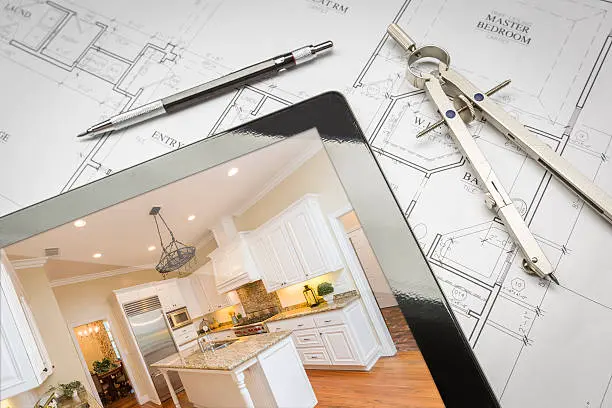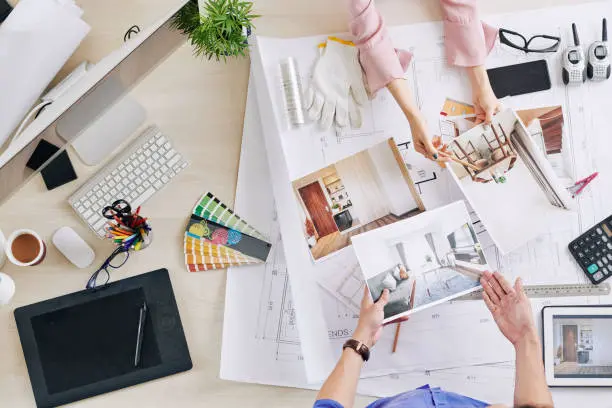
Modern Home Designs: Key Trends and Ideas for Contemporary Living
- Admin
Modern home design focuses on clean lines, functional spaces, and an aesthetic that embraces simplicity while integrating natural elements and cutting-edge technology. Whether you're building a new home or renovating an existing one, the principles of modern design can create a stylish and comfortable living environment. Here’s a guide to some of the most popular trends and ideas in modern home design.
Key Elements of Modern Home Design
Open Floor Plans: One of the hallmarks of modern design is the use of open floor plans, where living, dining, and kitchen areas flow seamlessly into one another. This layout maximizes space, encourages social interaction, and creates a sense of openness.
Minimalism: Less is more in modern home design. The focus is on decluttered spaces with clean lines, simple furniture, and a neutral color palette. Minimalist interiors emphasize functionality, with an uncluttered and spacious feel.
Natural Light and Large Windows: Modern homes are designed to let in as much natural light as possible. Large, floor-to-ceiling windows, sliding glass doors, and skylights not only illuminate the space but also create a connection between the indoors and outdoors.
Sustainable Materials: Sustainability is a major trend in modern design. Eco-friendly materials like reclaimed wood, bamboo, and recycled metal are often used. Energy-efficient windows, solar panels, and green roofs are also popular for reducing a home's environmental footprint.
Neutral and Earthy Tones: Modern interiors often feature neutral color schemes, including shades of white, beige, and gray, as well as earthy tones like browns and greens. These colors create a calm, serene atmosphere, with pops of color added through artwork, rugs, or furniture.
Integrated Technology: Smart homes are becoming the norm in modern design. From smart lighting systems and automated climate control to security systems and home assistants, technology is seamlessly integrated into the design to enhance comfort and convenience.
Modern Architectural Features
Flat or Low-Sloping Roofs: Flat or gently sloping roofs are a signature of modern architecture. These roofs give homes a sleek, minimalist appearance and are often used to create rooftop gardens or outdoor living spaces.
Geometric Shapes and Clean Lines: Modern homes favor geometric shapes with sharp, clean lines. Rectangular and square shapes dominate, with an emphasis on symmetry and balance in the overall design.
Natural and Industrial Materials: Combining natural materials like wood and stone with industrial materials like steel, glass, and concrete is a key feature of modern architecture. Exposed beams, metal accents, and concrete floors create an industrial-chic look that feels both modern and warm.
Indoor-Outdoor Living: Modern homes often blur the line between indoor and outdoor living spaces. This can include large sliding glass doors that open onto patios, terraces, or decks, making outdoor areas feel like an extension of the living room.
Sustainable Architecture: Green building practices are central to modern architecture. Homes are designed with energy efficiency in mind, incorporating passive solar design, insulated walls, and energy-saving technologies like geothermal heating and cooling.
Interior Design Trends in Modern Homes
Open-Concept Kitchens: The kitchen is often the heart of the home in modern design. Open-concept kitchens flow into the living and dining areas, creating a communal space that’s perfect for entertaining. Sleek cabinetry, integrated appliances, and large kitchen islands are popular features.
Multi-Functional Spaces: Modern homes prioritize flexibility, with spaces designed to serve multiple purposes. A home office might double as a guest room, or a living room might include a built-in workstation or reading nook.
Sleek and Simple Furniture: In keeping with the minimalist aesthetic, modern furniture is simple, with clean lines and little ornamentation. Pieces are often low-profile, made from natural materials like wood, leather, or metal, and designed for both comfort and functionality.
Natural Textures: To balance the sleekness of modern design, natural textures like wool, linen, and stone are often introduced. These materials add warmth and tactile interest to a room, making it feel cozy and inviting.
Bold Lighting Fixtures: Lighting plays a key role in modern design, with fixtures often serving as focal points in a room. Sculptural chandeliers, pendant lights, and floor lamps in metal, glass, or matte finishes are common in modern homes.
Popular Modern Design Styles
Mid-Century Modern: Inspired by the design trends of the mid-20th century, mid-century modern style features clean lines, organic shapes, and functional furniture. This style often incorporates natural wood finishes and bold, geometric patterns.
Scandinavian Modern: Scandinavian design is all about simplicity, functionality, and comfort. Known for its neutral color palettes, natural materials, and minimalistic furniture, this style creates bright, airy spaces with an emphasis on light and warmth.
Industrial Modern: Industrial modern design combines the raw, unfinished look of industrial spaces with modern elements. Think exposed brick walls, metal beams, and concrete floors, paired with sleek furniture and warm accents like wooden surfaces or textiles.
Contemporary Modern: Contemporary modern design constantly evolves, reflecting the latest trends in architecture and interior design. It often emphasizes neutral colors, open spaces, and the use of cutting-edge materials and technology.
Incorporating Green Spaces and Wellness Design
Biophilic Design: Biophilic design is all about bringing nature into the home. Large windows, indoor plants, and natural materials help create a connection to the outdoors, enhancing both the aesthetic and the well-being of the occupants.
Home Wellness Features: Many modern homes now incorporate wellness features, such as air purification systems, circadian lighting that mimics natural light cycles, and water filtration systems. These features are designed to improve both physical and mental health.
Indoor Gardens and Vertical Green Walls: Indoor gardens or vertical green walls are a popular way to incorporate greenery into modern homes, especially in urban environments. These living walls not only enhance the decor but also improve air quality and reduce stress.
Conclusion
Modern home design is about creating spaces that are functional, comfortable, and visually appealing. Whether you’re inspired by the simplicity of minimalism, the warmth of natural materials, or the innovation of smart home technology, modern design offers endless possibilities for creating a living space that reflects your personal style. By embracing open layouts, clean lines, and sustainable practices, modern homes provide a perfect blend of form and function for contemporary living.
